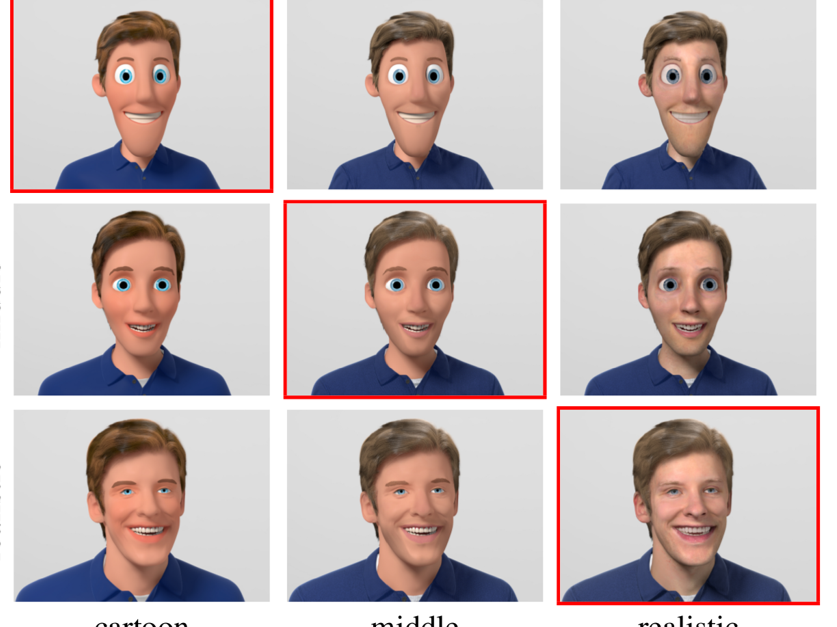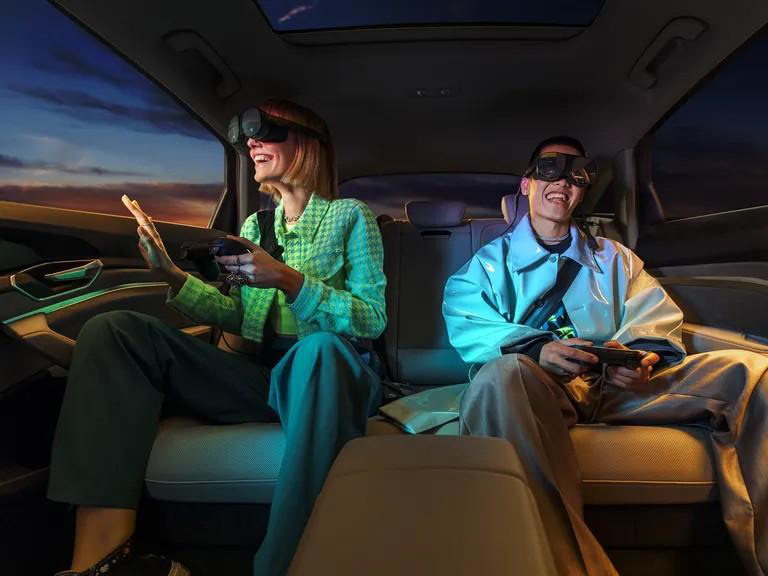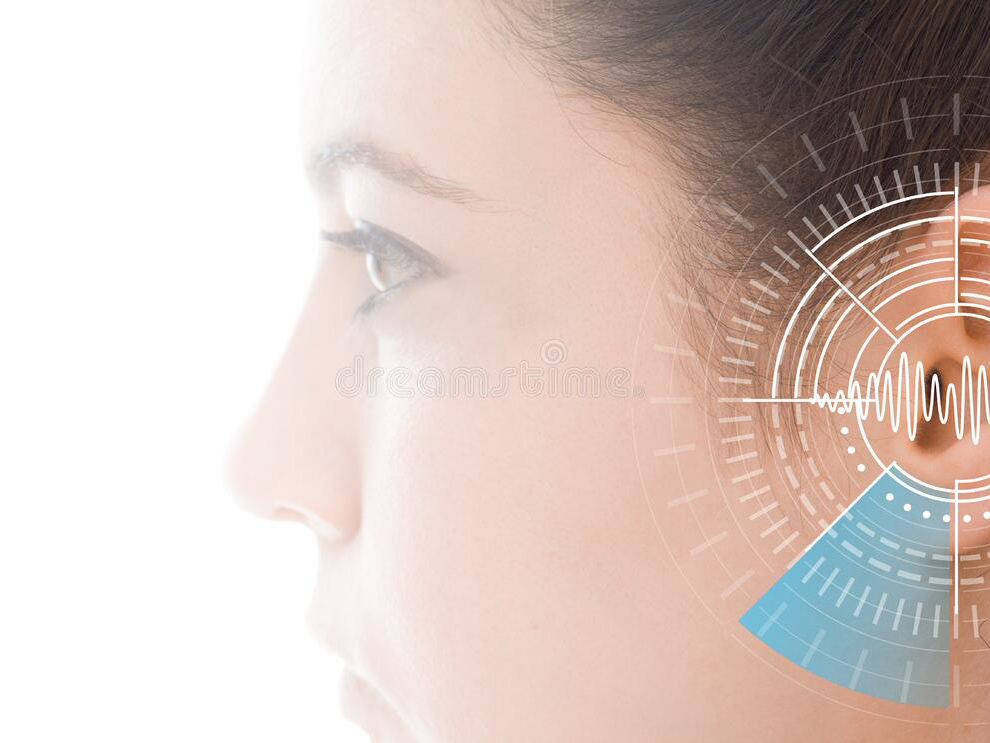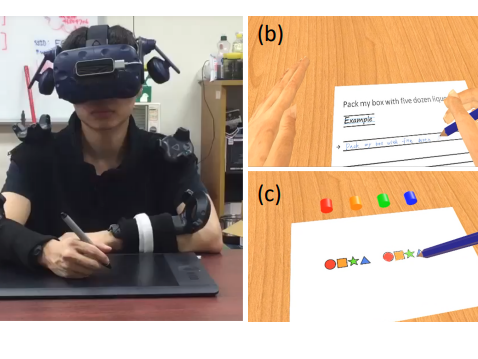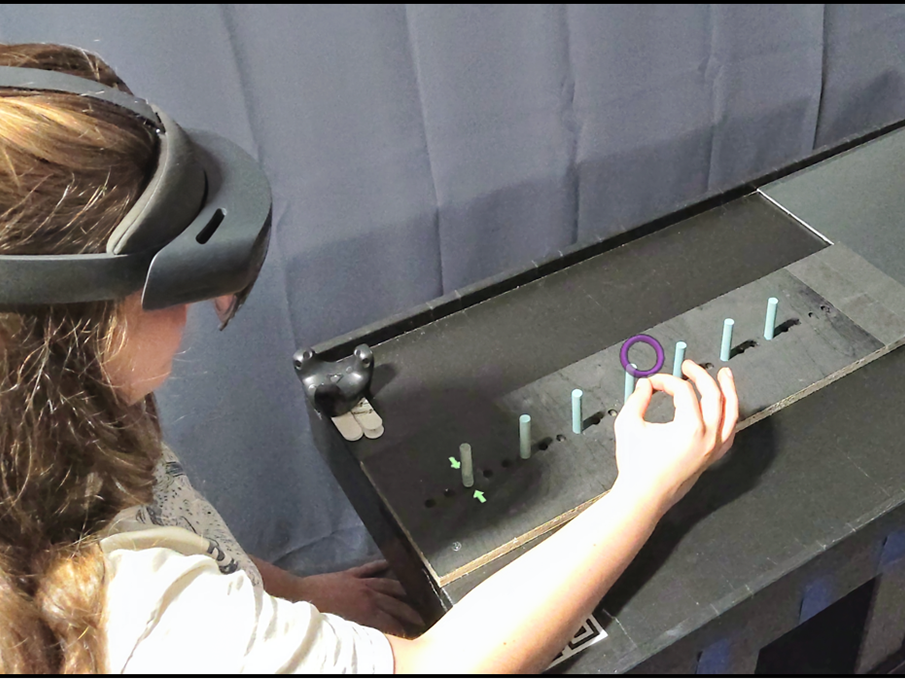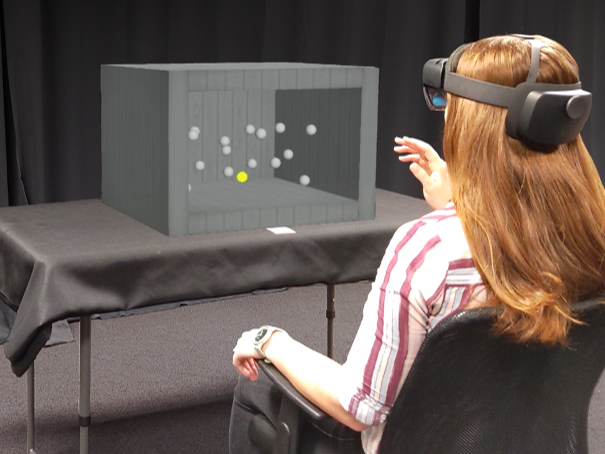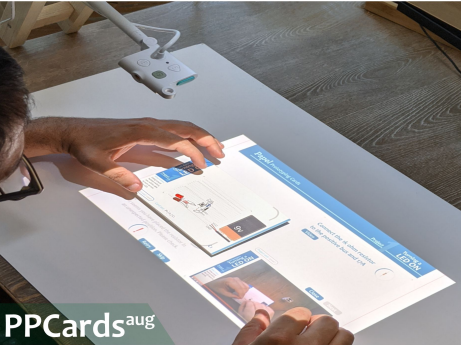Goal: To determine how the sensory information using which size is perceived affects users' size estimates of 3 dimensional tangibles that have been incorporated into a VR simulation.
We developed a framework to incorporate 3D tangibles in VR and investigated how the accuracy of size perception changes based on the sensory information channel with which users perceive size. We compared users' size-estimates of tangible dials obtained under the affordance of one of three types of sensory information: Vision-only; Haptics-only; (or) Vision and Haptics.
a) Participant sitting between a tracking table and reporting screen while wearing an HMD.
b) Participant holding one of the dials. c) Participant reports perceived size on touch screen display. d) Several of the 3D printed dials.
Assembly of tracking table used in study. A Miscrosoft Surface Dial is used underneath the table along with 3d printed dials that couple together and can be manually swapped. This tracking table assembly is used to replicate what users see in the virtual world when interacting with the dials in the real world.
a) Virtual experimental room replicating the real environment. b) Reporting screen replicating a Microsoft Surface Studio machine. c) Tracking table in the virtual world, d) Researcher GUI.
Study Overview

